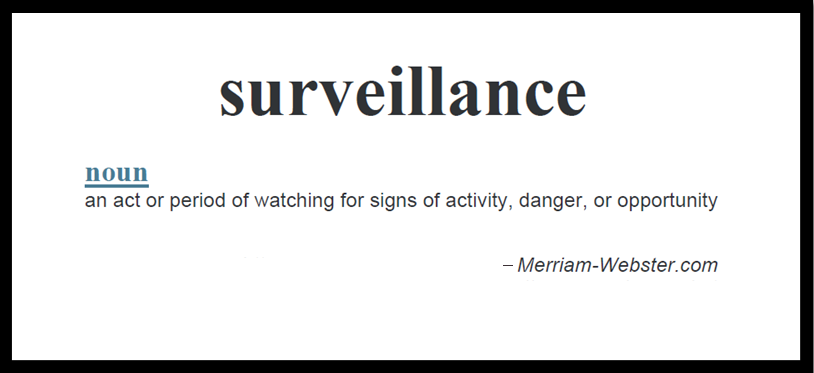
In an earlier blog post, I reminded everyone that there was an “M” in the LMRDA (the Labor-Management Reporting and Disclosure Act) for a reason. The statute requires reporting by employers and labor relations consultants, not just unions. We often refer to the reports filed by employers (Form LM-10) and labor relations consultants (Forms LM-20 and LM-21) as “Persuader Reports,” but the LMRDA requires that employers report to the Labor Department on considerably more than their persuader activities.
In part, the LMRDA requires employers – management – and consultants to file “Surveillance Reports” to report certain expenditures and arrangements they make in connection with labor disputes. To be more precise, Section 203(a)(3) of the LMRDA requires that employers file a report 90 days after the close of their fiscal year detailing:
“[A]ny expenditure, during the fiscal year, where an object thereof, directly or indirectly, is to interfere with, restrain, or coerce employees in the exercise of the right to organize and bargain collectively through representatives of their own choosing, or is to obtain information concerning the activities of employees or a labor organization in connection with a labor dispute involving such employer...”
The law also requires in Section 203(b)(2) that any person who enters into an agreement or arrangement with an employer to engage in these activities file a report within 30 days “containing the name under which such person is engaged in doing business and the address of its principal office, and a detailed statement of the terms and conditions of such agreement or arrangement.”
In the face of these statutory requirements, I can report that since the inception of electronic reporting of Form LM-10, 20 and 21 reports in 2019, very few employers or consultants – or anyone else – have filed reports containing information regarding surveillance expenditures or arrangements. And beyond those few electronic filings, no one at the Office of Labor-Management Standards has any recollection of any paper filings on this subject and, until now, OLMS has never opened a case seeking the filing of an LM report regarding these activities, so there is little history setting out the metes and bounds of what the statute requires.
To begin to fill that gap, OLMS issued a fact sheet regarding required LM-10 employer reporting that includes some guidance on the subject. This fact sheet also explains that the law requires employers to maintain records for a period of five years to verify the reports and that OLMS has the authority to inspect records. OLMS uses it broad investigatory authority, including its authority to issue subpoenas to obtain documents, to enforce the law.
You might think that because OLMS has hardly ever received a report about these kinds of activities they don’t occur. Not so. When I was in private practice, it was the rule – not the exception – for employers who were, for example, the subjects of strikes to position video cameras around the picketing area, to take still photos of the picketing, and to monitor the plant entrances simply to determine who was on the picket line. During organizing campaigns, employers routinely asked workers questions about their workplace complaints, either directly or through surveys – sometimes anonymous, sometimes not so anonymous. And it was not unusual for employers to ask employees directly whether they supported an organizing drive.
While this “old school” surveillance continues, technology advances have expanded employer capacity to collect information about their employees. Tools to monitor employee email, social media use, internet activity, physical whereabouts and many more aspects of employees’ lives abound.
Also expansive are the types of disputes that may be relevant to employers’ surveillance activities. The LMRDA defines “labor dispute” in Section 3(g) broadly as:
“[A]ny controversy concerning terms, tenure, or conditions of employment, or concerning the association or representation of persons in negotiating, fixing, maintaining, changing, or seeking to arrange terms or conditions of employment, regardless of whether the disputants stand in the proximate relation of employer and employee.”
I emphasize “any controversy” to make a point that should be self-evident: LMRDA employer and consultant reporting is not limited to expenditures and activities occurring during a union organizing campaign. “Any controversy” means what it says – if there is a dispute between management and two or more employees acting together about any employment-related matter, expenditures incurred by employers to “obtain information about” employees’ activities concerning that dispute, and arrangements with consultants to do the same, are reportable.
Expenditures and agreements made with the object to obtain or supply “information concerning the activities of employees or a labor organization in connection with a labor dispute” may or may not be lawful – that is for the National Labor Relations Board to decide on a case-by-case basis – but either way that activity must be reported to OLMS. Doing so ensures full enforcement of the “M” in the LMRDA and provides workers, the public and policymakers with the transparency Congress intended.
Interested in learning more about surveillance reporting? Registration is now open for an upcoming OLMS webinar on Form LM-10 and LM-20 reporting on Sept. 28, from 2-3 p.m. EST. I invite you to join us.
Jeffrey Freund is the director of the Department of Labor’s Office of Labor-Management Standards.

 U.S. Department of Labor Blog
U.S. Department of Labor Blog